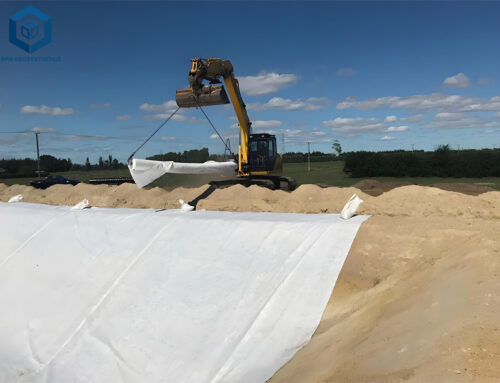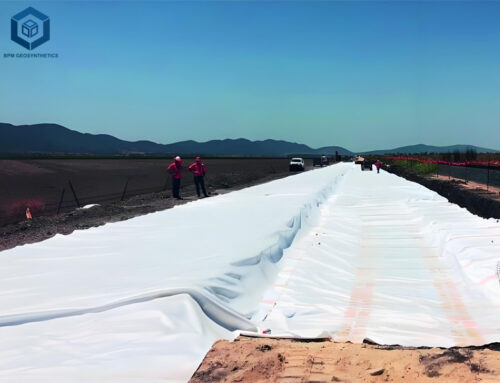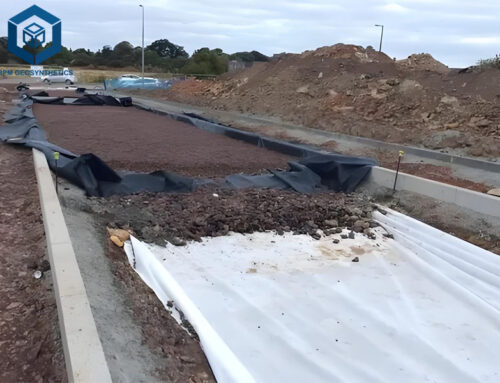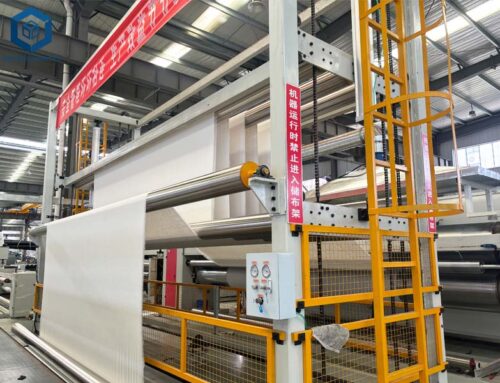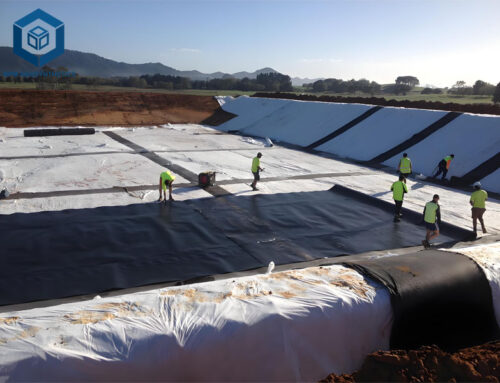Ultimate Guide To Geotextile Fabric for Sale – Are you looking for high-quality geotextile fabric for your next project? Our comprehensive guide will help you understand what geotextile fabric is, its advantages, and various applications. Whether you’re in construction, landscaping, or environmental engineering, BPM geotextile fabric is a versatile material that can provide numerous benefits.
1. What Is Geotextile Fabric?
Geotextile fabric is a permeable textile material used in various civil engineering and environmental applications. Made from polypropylene or polyester, it is designed to be resistant to deterioration and can be woven, nonwoven, or knitted. Geotextile fabric serves multiple functions, including filtration, reinforcement, separation, and drainage. It is widely used in projects such as road construction, soil stabilization, erosion control, and landfill liners.
There are different types of geotextile fabrics available in the market, each with specific properties and applications. Woven geotextiles are made by interlacing yarns and offer high tensile strength and dimensional stability. Nonwoven geotextiles are produced by bonding fibers together and provide excellent filtration and drainage properties. Knitted geotextiles are made by interlooping yarns and offer flexibility and conformability.
The choice of geotextile fabric depends on the specific requirements of your project. Factors such as soil type, traffic conditions, and environmental factors should be considered when selecting the appropriate geotextile fabric.
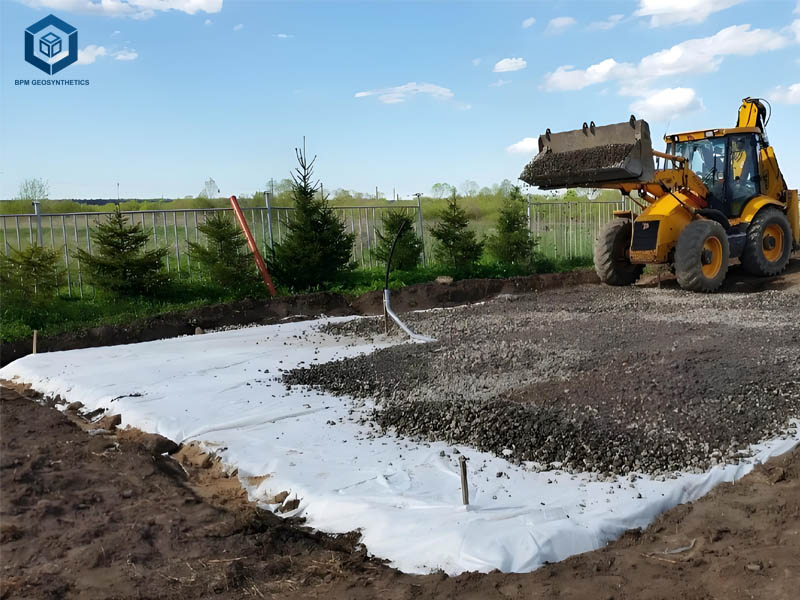
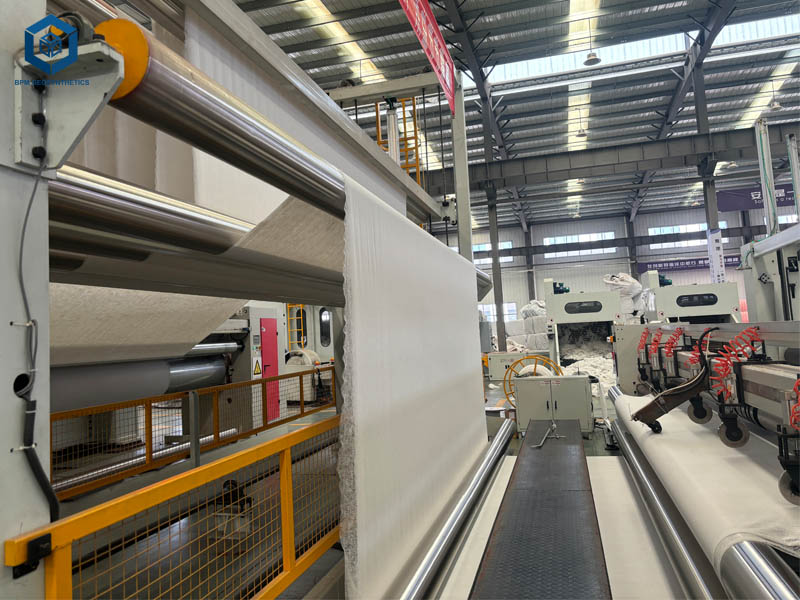
2. What Are Advantages Of Geotextile Fabric?
Geotextile fabric offers numerous advantages that make it a popular choice for various applications. Below are some key benefits:
2.1 Geotextile Fabric for Sale – Cost-Effectiveness
Geotextile fabric can significantly reduce project costs by minimizing the amount of aggregate or soil required. It can also extend the lifespan of infrastructure projects, reducing maintenance and repair costs in the long run.
2.2 Geotextile Fabric for Sale – Environmental Benefits
Geotextile fabric is an environmentally friendly material that can help reduce soil erosion and stabilize slopes. It can also be used in landfill liners and caps to prevent contaminants from leaching into the environment.
2.3 Geotextile Fabric for Sale – Improved Stability and Load Distribution
When used in road construction and soil stabilization, geotextile fabric can distribute loads more evenly, reducing stress on the underlying soil. This can lead to improved stability and reduced settlement.
2.4 Geotextile Fabric for Sale – Easy Installation
Geotextile fabric is relatively easy to install and can be cut to size on-site. Its flexibility allows it to conform to various shapes and terrains, making it suitable for a wide range of projects.
2.5 Geotextile Fabric for Sale – Long Service Life
Geotextile fabrics are resistant to degradation and can last for many years when properly installed and maintained. This makes them a reliable and durable solution for various applications.
2.6 Wide Range of Applications
Geotextile fabric can be used in a variety of industries, including construction, landscaping, agriculture, and environmental engineering. Its versatility makes it a valuable material for solving many engineering challenges.
3. What Are Applications Of Geotextile Fabric?
The applications of geotextile fabric are vast and diverse. Here are some common uses:
3.1 Road Construction
In road construction, geotextile fabric is used to separate different layers of soil and aggregate. This helps prevent intermixing and provides a stable base for the road. It also allows for better drainage, reducing the risk of water damage and potholes.
3.2 Soil Stabilization
Geotextile fabric can be used to stabilize soil in areas prone to erosion or landslides. It helps hold the soil in place and provides reinforcement, preventing soil movement and maintaining slope stability.
3.3 Erosion Control
Geotextile fabric is an effective solution for controlling erosion in coastal areas, riverbanks, and construction sites. It can be used to create erosion control blankets or mats that protect the soil from the forces of water and wind.
3.4 Drainage Systems
Geotextile fabric is often used in drainage systems to allow water to pass through while preventing soil particles from entering the drainage pipes. This helps maintain the efficiency of the drainage system and prevents clogging.
3.5 Landscaping and Garden Applications
In landscaping, geotextile fabric can be used as a weed barrier, preventing the growth of weeds while allowing water and nutrients to reach plant roots. It can also be used to create decorative features such as pathways and garden borders.
3.6 Agriculture
Geotextile fabric can be used in agriculture for soil stabilization, weed control, and water conservation. It can also be used to protect crops from frost and pests.
3.7 Environmental Engineering
Geotextile fabric is used in environmental engineering applications such as landfill liners, sludge dewatering, and sediment control. It helps prevent the release of contaminants into the environment and provides a stable base for waste containment.
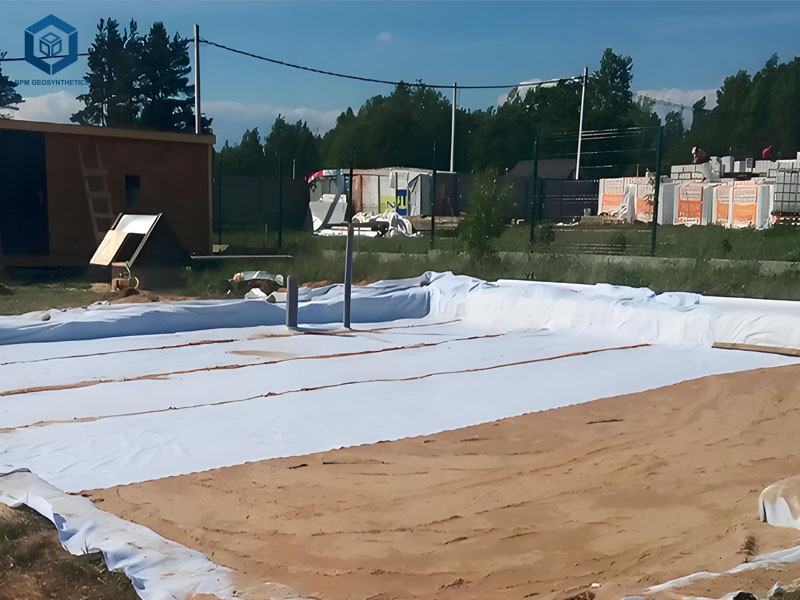
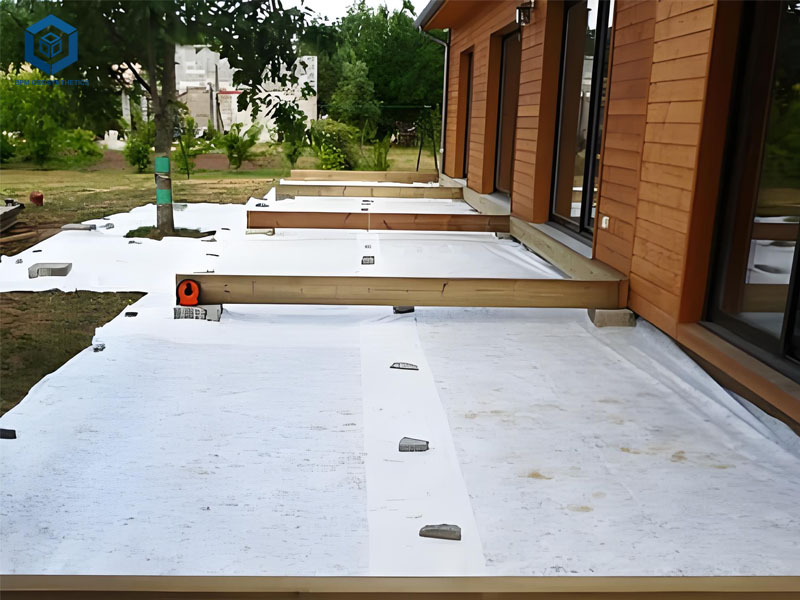
4. How to Choose the Right Geotextile Fabric?
Selecting the ideal geotextile fabric is critical for project success. Here’s a step-by-step guide, with insights on why BPM Geotextile stands out as a trusted choice:
4.1 Define Your Project Requirements
-
Application: Identify the primary purpose (e.g., drainage, reinforcement, erosion control).
- Example: For road stabilization, a high-strength woven geotextile (like BPM’s W Series) is ideal.
-
Environmental Conditions: Consider soil type, moisture, UV exposure, and chemical resistance.
4.2 Choose the Right Type
-
Non-woven Geotextiles (e.g., BPM’s NW Series): Best for filtration/drainage (landfills, ponds).
-
Woven Geotextiles (e.g., BPM’s W Series): High tensile strength for reinforcement (roads, embankments).
-
Specialty Fabrics: BPM offers custom solutions for unique needs (e.g., heavy-duty marine applications).
4.3 Check Key Specifications
-
Strength: Match tensile strength (ASTM D4595) to load requirements.
-
Permeability: Ensure proper water flow (BPM fabrics specify flow rates and AOS).
-
Durability: Verify UV resistance and longevity (BPM uses UV-stabilized polymers).
4.4 Prioritize Quality & Certifications
-
Look for ISO 9001, CE, or GRI certifications.
-
BPM Geotextile complies with ASTM, ISO, and EU standards, with third-party test reports available.
4.5 Compare Suppliers
-
Why BPM?
-
Manufacturer Direct: Competitive pricing, no middlemen.
-
Global Experience: Trusted by projects in 30+ countries.
-
Customization: Tailored weights, widths, and strengths.
-
4.6 Request Samples & Technical Support
-
Test fabric compatibility with your project.
-
BPM offers free samples and engineering support to ensure optimal selection.
4.7 Consider Cost vs. Lifespan
-
Cheap fabrics may fail prematurely. BPM balances cost-efficiency with 15+ year lifespans in harsh conditions.
5. Summary
Geotextile fabric is a versatile and cost-effective material with numerous advantages and applications. Whether you’re involved in construction, landscaping, or environmental engineering, geotextile fabric can provide valuable solutions for your projects. When purchasing geotextile fabric, consider the specific requirements of your project and choose a reputable supplier to ensure quality and reliability.
By understanding the benefits and applications of geotextile fabric, you can make informed decisions and improve the success of your projects.
6. About BPM
BPM own state-of-the-art manufacturing factory is located in Taian City, the famous tourist city near the expressway from Beijing to Shanghai, Shandong Province, China. In recent years, we had invested more than 20000000 dollars to improve the basic production facilities, working conditions, employee salary and welfare, technical and teamwork training, etc.
Our professional geommebrane factory is equipped with advanced processing machines and production lines, which give us the power to keep high product quality, shorter delivery time and competitive cost to meet the demands of our worldwide customers. We also can manufacture according to your special requirements, ODM, OEM, customization are also available.
BPM Geosynthetics, are passionate about all things geosynthetics, from new product development, enhanced testing methodologies, production, to after-sale servicing. Today, BPM Geosynthetics is a team of over 100 professionals working to serve clients from all around the world.

